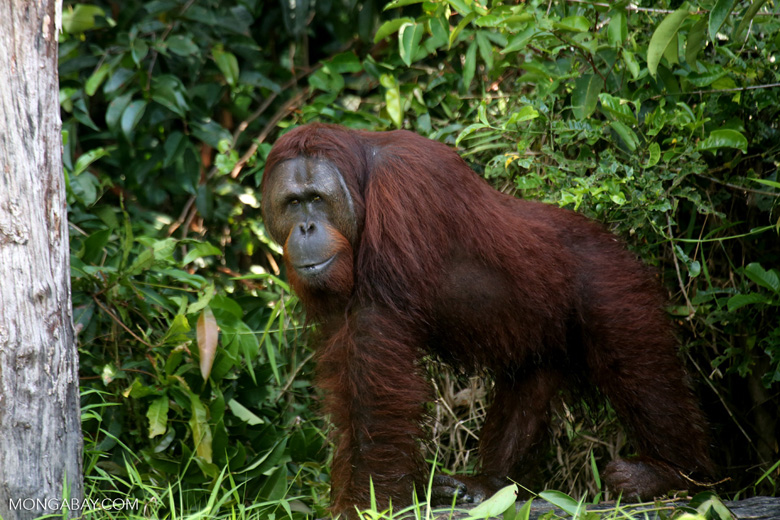- The new peatlands restoration agency is looking at an early-warning system that can assess peatlands’ vulnerability to combustion.
- Authorities in Aceh are still struggling to extinguish fires that started last week due to the prolonged dry weather.
- In Riau, activists handed the governor a lawsuit over last year’s fires.
Local governments, environmental agencies, emergency services and the military are working across Indonesia’s fire-prone areas as President Joko “Jokowi” Widodo tries to minimize this year’s haze in what could be the largest challenge of his presidency.
In Singapore, politicians and NGOs have called for more preemptive action as the prospect of more fires in the coming weeks appears increasingly likely.
“You need to do that because with three, four months of haze now in Singapore, it actually seems to become a problem that we’re facing 40 to 50 percent of the year,” said Kim Stengert, a spokesperson at WWF Singapore.
The head of Indonesia’s new peatland restoration agency has said the government should look at expanding a peat early-warning system, which is currently operational only in Central Kalimantan province. The system, developed with the University of Hokkaido in Japan, can give authorities early cues as to whether the land is vulnerable to combustion.
“It monitors the humidity, water level, temperature and amount of rainfall, among others,” said Haris Gunawan, deputy head of research and development at the peatland restoration agency. “We are interested in trying to adopt it.”
Peatland agency head Nazir Foead has also expressed interest in rolling out the system to other at-risk areas in Sumatra and Kalimantan. Environment minister Siti Nurbaya said Indonesia needed to go further than simply respond to hotspots with firefighting efforts.

Local authorities in central Aceh province were still struggling on Friday to extinguish fires that started on March 10 due to the prolonged dry weather. Several fires also burned in February in Singkil and south Aceh in peat bogs.
Authorities in Kalimantan and Sumatra are also rushing to ensure they are in a position to get close restoring 600,000 hectares of peatland this year, a target set by Jokowi. The four priority zones this year are Pisau in Central Kalimantan, Meranti in Riau province, and both Banyuasin and Ogan Komering Ilir in South Sumatra. The peat agency has a vast logistical task ahead to come up with a comprehensive plan to restore peatland in those areas by June.
One member of the agency has already said that staff are working with data that can best be described as patchy — Indonesia has incomplete data and mapping of its peatlands.
Regency heads all the way down to rukun tetangga — a neighborhood chief for a few hundred people — are working with NGOs and companies to better prepare for fires. Mongabay Indonesia reports from West Kalimantan province on the progress made by companies and the community.

In Riau, provincial head of the Indonesian Forum for the Environment (Walhi) Riko Kurniawan and other activists handed the governor a lawsuit.
“We can’t file a claim for compensation for the effects of the smoke,” said Suryadi, a member of the legal team working on the suit. “But here are regulations that can be improved so that the smoke does not happen again.”
The lawsuit is broad, naming everyone from Jokowi to the local land agency as defendants in a bid to force a public apology for the people of Riau. Riau was one of the provinces worst-affected by haze last year as air quality in the capital, Pekanbaru, and surrounding areas descended into hazardous levels, giving tens of thousands respiratory disease.
In neighboring South Sumatra province, the regional government is working on prevention initiatives targeting 119 village administrations, most of which are in areas targeted by the peat agency’s restoration program for this year. One of the most notorious companies involved in the 2015 haze crisis is also joining the village government scheme. PT Bumi Mekar Hijau, which was taken to court by the environment ministry last year over fires found on its concessions, is in dialogue with the government over the scheme.
“First we must ensure law enforcement is working,” said Hadi Jatmiko, executive director of Walhi in South Sumatra. “The let’s look at restoration and compensation.”